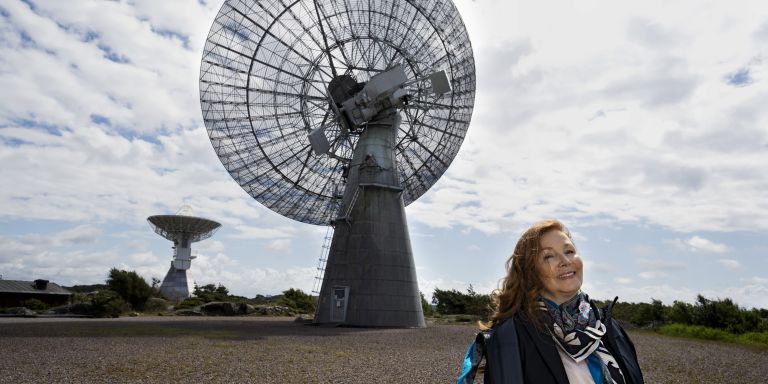
Susanne Aalto
Professor of Radio Astronomy
Wallenberg Scholar
Institution:
Chalmers University of Technology
Research field:
Star formation, massive black holes and cold galactic superwinds


Wallenberg Scholar
Institution:
Chalmers University of Technology
Research field:
Star formation, massive black holes and cold galactic superwinds
Aalto, who is a radio astronomer, has devoted her research career to finding hidden phenomena in the universe. Galaxies grow more vigorously when they are surrounded by dust and gas, but this also makes these dust-shrouded building blocks of the universe particularly difficult to study.
To see beyond the veils of dust, Aalto and her research team are using powerful telescopes, such as ALMA in Chile and the new James Webb space telescope, to examine the radio and infrared rays emitted by the galaxies.
“It can be likened to a blanket thrown over a lamp. The light is obscured by the blanket but can be seen once more using an infrared camera. Thanks to ALMA and the James Webb telescope, we can see details in our hidden universe that have not been visible to us before. We also intend to develop new methods to find the specific objects and processes we want to study, with the help of AI, simulations and computer models. It’s very exciting, especially since we’re working with completely new models for how black holes grow with their host galaxies,” Aalto says.
The universe holds many secrets. Aalto is particularly interested in the supermassive black holes that lie at the center of most galaxies, including our own – the Milky Way. How, and how quickly, these massive black holes grow are among the riddles that the research team is addressing. They hope the new methods they are using will also enable them to weigh these astonishingly heavy objects. They also hope to make completely new discoveries.
Over the next few years, we will be working on completely new ideas that may reveal key processes for how black holes and galaxies grow in tandem.
“There might be undetected, fast-growing black holes in our local Universe. This is one question we hope our new methods will be able to answer. And perhaps our research can show that the current description of how and where supermassive black holes grow needs another chapter,” she says.
One of the phenomena that Aalto wants to examine is how massive black holes grow in interaction with surrounding stars.
“The weight of a massive black hole is related to the weight of the galaxy. We suspect that a supermassive black hole can grow in tandem with the birth of many new stars. But why? How this interaction works, how galaxies detect and ‘talk’ to each other is a mystery. Ascertaining how galaxies and massive black holes grow in parallel is a huge task. But I believe in huge tasks,” she says.
Another key factor in galactic formation and evolution seems to be the “superwinds” at the heart of galaxies. Some of them are cold, powerful and rotating, and are relatively little explored, but the researchers believe they may play a key role in the way that galaxies and black holes grow.
These cold superwinds contain huge quantities of energy and are heavy, consisting of molecules that enable Aalto and her research team to measure and track how the winds move.
“Superwinds seem to both help and hinder the growth of massive black holes in the form of a feedback loop. The winds can transport gas and dust from the interior of galaxies, thereby slowing the growth of the massive black hole. But the gas in the superwind can also fall back to the very center of the galaxy, “feeding” the black hole with matter, driving its growth. We need to learn more about how and why this happens,” she comments.
Aalto’s fascination for space and astronomy began when she was just a child. She particularly remembers gazing up at the stars in a clear night sky when she was on her way to her ice-skating class.
“I was captivated by the starry sky, and have remained in its thrall ever since. As a researcher, I love immersing myself in fresh data from ALMA or James Webb, or bouncing ideas with my research team. And it’s great to hear new ideas and angles from young researchers. I’m so fortunate to have a job like this,” she declares.
Aalto says that all space research and astronomy is founded on our desire to find out who we are and where we come from.
“Learning more about our cosmic origins is a desire that people have always had, ever since we started looking up at the stars,” says Aalto.
She sees it as a great privilege to have been awarded a Wallenberg Scholar grant – a privilege and a responsibility.
“It’s wonderful to receive this recognition. First and foremost, it gives me an opportunity to carry out my research in the best possible way, together with creative and knowledgeable people. Over the next few years we will be working on completely new ideas that may reveal key processes for how black holes and galaxies grow in tandem. And this is of huge importance in understanding how the universe is evolving,” she says.
Text Ulrika Ernström
Translation Maxwell Arding
Photo Johan Wingborg